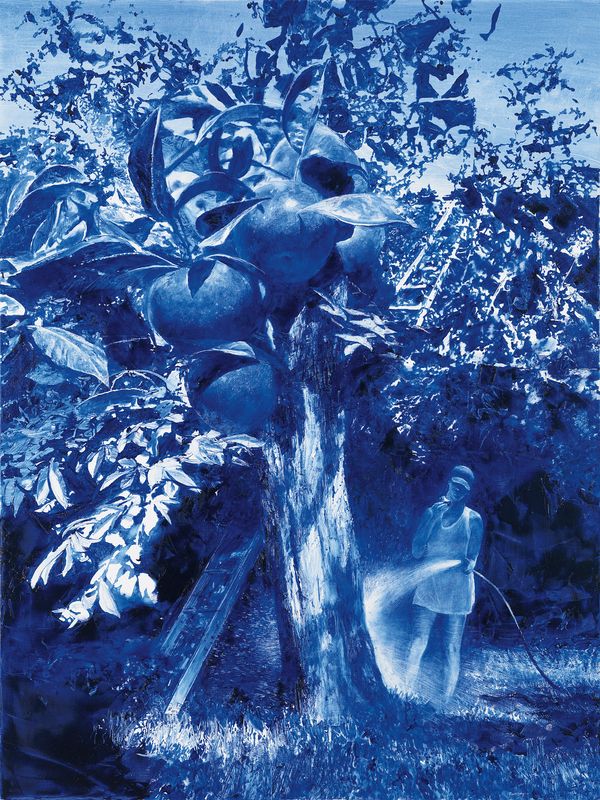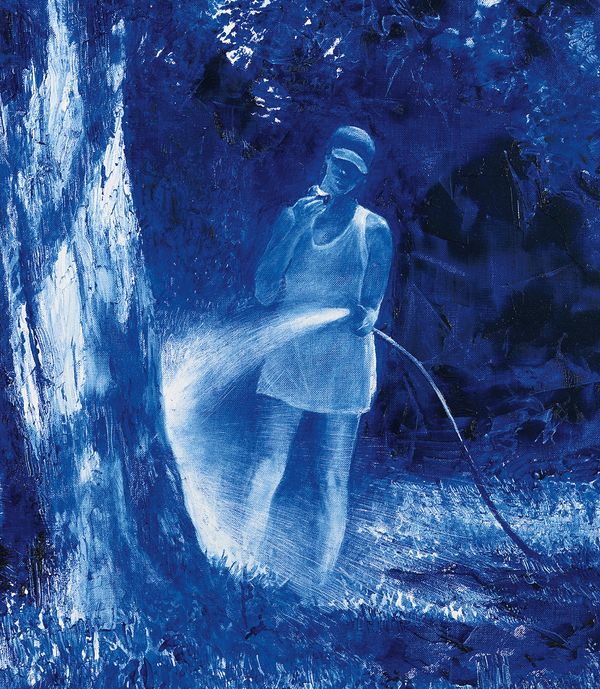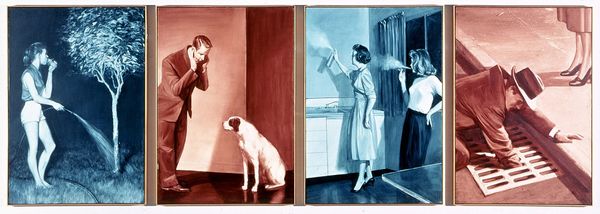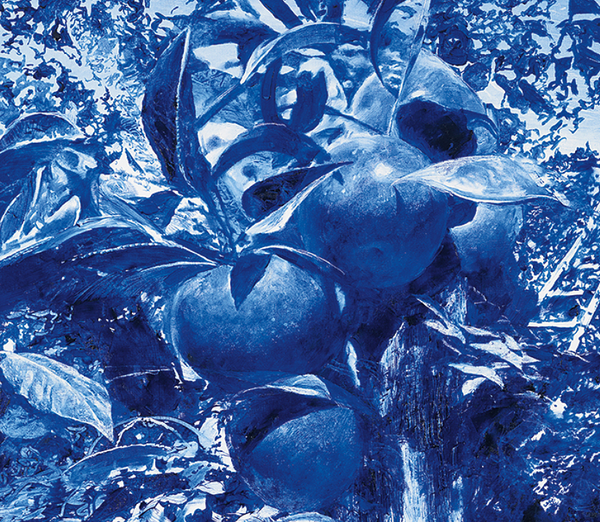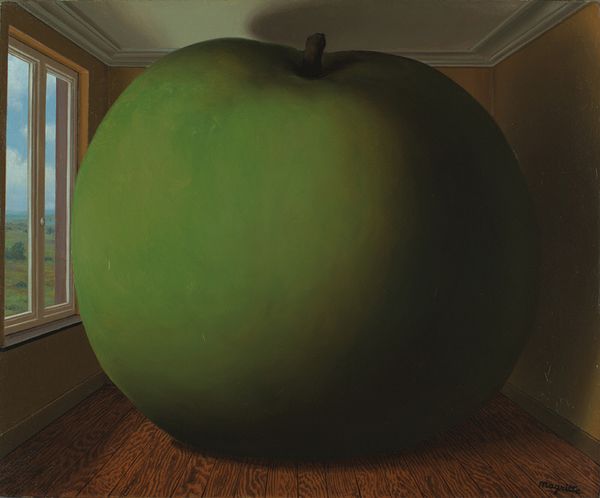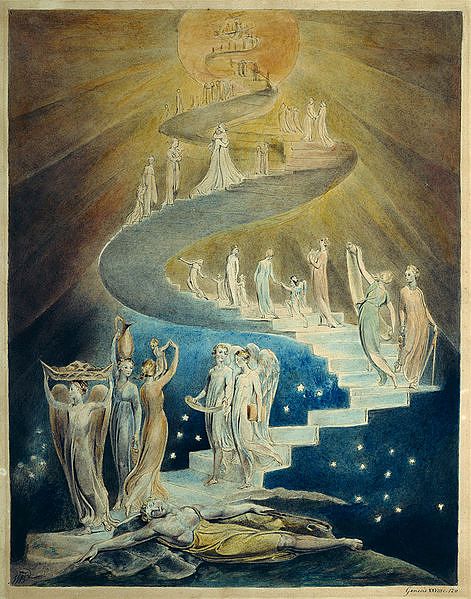Mark Tansey Garden, 2006
"But what is it all about?" is an all-too-common question that arises when viewing an artwork—whether abstract, figurative, or somewhere in between. While there are numerous aspects and perspectives to consider, our 'Breaking it Down' series offers insights into key highlights from this season's 20th Century & Contemporary Art Evening Sale.
Mark Tansey's Garden, 2006 is at once surreal and deceptively familiar. This elusiveness is typical for Tansey, who is known for embracing allegory, symbolism and metaphor in his paintings. Tansey came to prominence in New York in the late 1970s in a context in which abstract and conceptual art prevailed. Alongside such peers as David Salle, Tansey radically embarked upon a return to figurative painting after it had been famously declared obsolete.
A painted picture is a vehicle. You can sit in your driveway and take it apart or you can get in it and go somewhere.
— Mark Tansey
Garden reveals Mark Tansey's celebrated approach to painting that merges appropriation and conceptual art into a highly unique painterly style. As with all of Tansey's paintings, Garden developed from a specific visual and a conceptual framework: the imagery is derived from the artist's extensive archive of found imagery, culled over the years from myriad sources such as magazines, newspapers and art history books, as a well as a conceptual trove of specific questions, philosophical themes and motifs conceived by the artist.
Garden presents what at first glance appears to be a banal suburban scene: A woman, casually clad in a shift t-shirt dress and baseball cap, eats an apple while watering the tree.
Tansey here has revisited the motif depicted on the left panel of his iconic four-part painting Four Forbidden Senses, 1982, in the collection of the Broad Museum, Los Angeles. Rendered in a similar blue monochromatic color palette, this vignette depicts a woman in a strikingly similar pose of watering a tree while eating an apple.
Mark Tansey Four Forbidden Senses, 1982, in the Broad Museum, Los Angeles
It is upon closer inspection, however, that we become aware of the surreal inconsistencies that proliferate this composition from our Evening Sale: The figure appears to be watering the tree's trunk rather than its roots; a ladder set against the tree trunk seems to extend into the sky ad infinitum; and over-sized apples tower menacingly and, through a trick of optics, seem to push out beyond the confines of the picture plane.
With an explicit nod to René Magritte's The Listening Room, in the Menil Collection, Houston, Tansey dislocates notions of scale and reality by inserting the magnified apples. Like Magritte, Tansey strives for his imagery to be seen as both accessible and open-ended.
René Magritte The Listening Room (La chambre d'écoute), 1952
Apples appear in many mythological and religious traditions, functioning as symbols for knowledge, immortality, life and love, but also for the fall of man, sexuality and sin. In this composition, they evoke the biblical story of Adam and Eve in which Eve is deceived into eating fruit from the forbidden fruit.
Albrecht Dürer Adam and Eve, 1507. Albrecht Dürer - Galería online del Museo del Prado de Madrid: Adán y Eva
The ladder that mysteriously leads into the sky in Tansey's Garden similarly conjures religious symbolism, specifically representing the connection between heaven and earth. It typically symbolizes progress, spiritual passage and ascension.
William Blake Jacob's dream, 1805
Whereas many of Tansey's earlier paintings depictur figures in the midst of a quest for truth, the woman in Garden is ignorant of the path to "enlightenment"—as embodied in the ladder and in her failure to feed the roots of the tree, instead choosing to eat the forbidden fruit.
Mark Tansey's Garden, 2006, is on view at Phillips's New York 20th Century & Contemporary Art Evening Sale preview through November 15.
